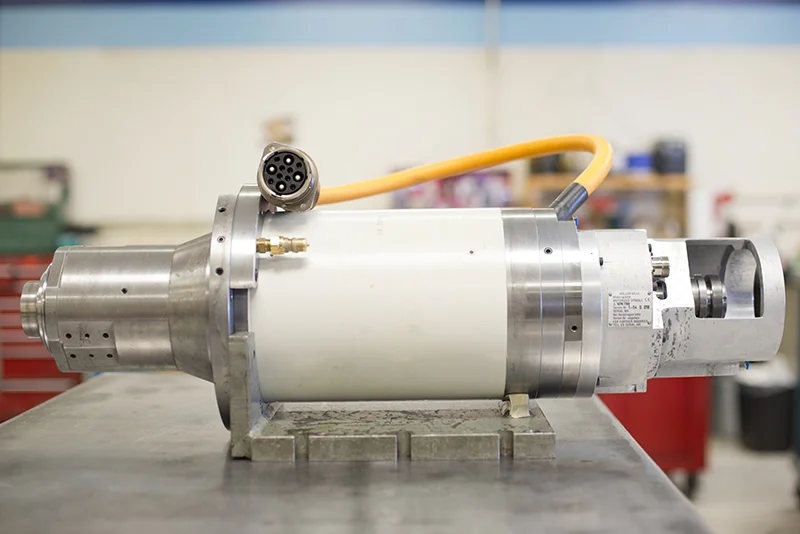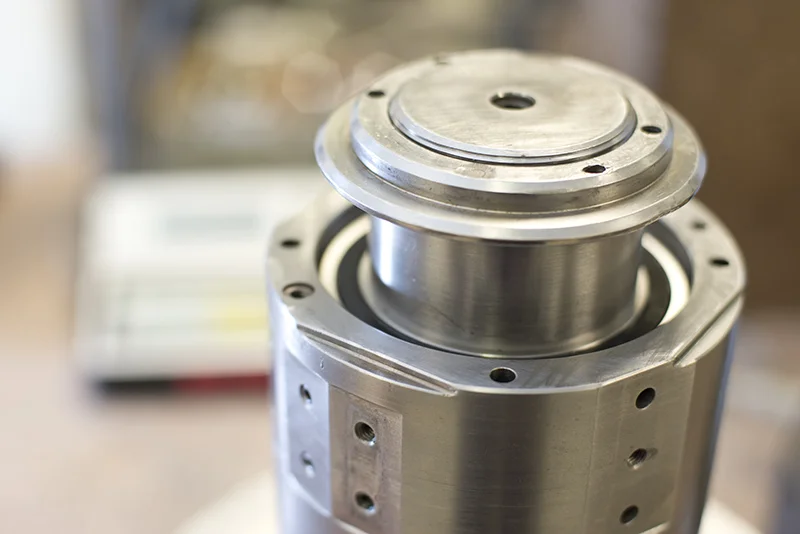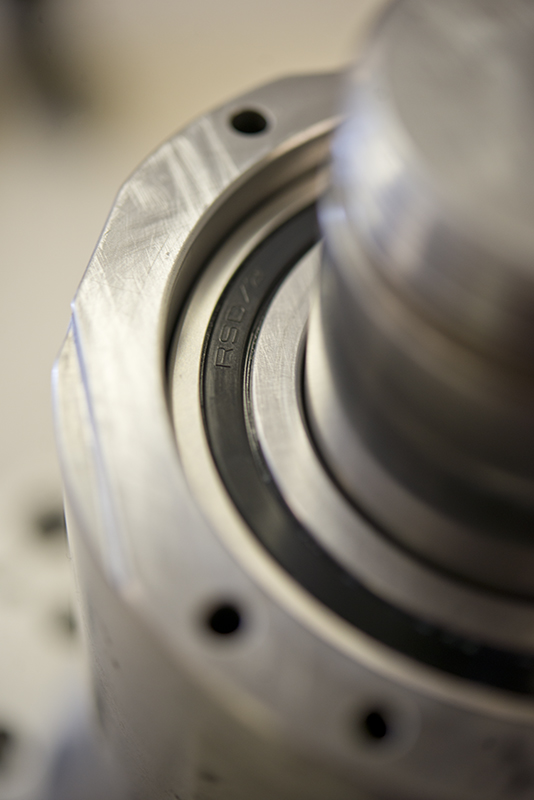Colonial Tool's Rigidity at Speed Precision Spindles engineering philosophy is to maximize rigidity at the operating speed to ensure the highest quality manufactured part for the customer.
From this philosophy an optimization program is instituted on receipt of the customer's requirements to ensure spindle compatibility with the proposed tooling chosen.
The optimization considers tooling loads, speeds, type of bearing, lubrication and envelope size to maximize rigidity, life and cost.
It is then more appropriate to recognize the spindle capabilities in terms of angular contact bearing size, type, configuration, preload and lubrication.
A. Speed Capacities
Considering that angular contact bearings are the most common type of bearing utilized in our standard spindles, the effects of size of the speed capabilities using the 15 degrees and 25 degrees contact angle precision ball bearings. Normally a dmN (mean pitch bearing diameter x RPM) rating can be applied to bearings of a different configuration and preload provided the size of bearings do not vary significantly for comparison.
B. Bearings
Bearing selection is a function of many different criteria which foremost must achieve precision and Rigidity at Speed. The most common bearings utilized in the Colonial Tool Spindles are the ultra precision angular contact bearings (ABEC 7 and 9), taper bore double row roller bearings (class SP or UP) and taper bearings (class o).
ADVANTAGES DISADVANTAGES
Angular Contact Bearings
- 15 degree has good radial capacity and stiffness
- very high speeds
- moderate cost
- design simplicity
- cross sectional variations available
- no preload adjustment required
- 25 degree has good axial capacity and stiffness
- good availability
- low power consumption
- possible s[ring preload
- ultra high precision
Double Row Taper Bore Roller Bearings advantages;
- very high radial load and stiffness capacity
- moderate to high speeds
- preloads adjustable by maintenance personnel (not recommended)
- good availability
- low cost
- high precision
Taper Roller Bearings advantages;
- high axial and radial stiffness combined
- low cost precision
- design simplicity
- spring load possible
- Moderate to low thermal instability when fixed preloaded
- Moderate power loss
- Individual preload gauge required for each size
- Design complex
- Requires thrust bearings
- Low speeds
- Sensitive to thermal instability
- Poor availability










